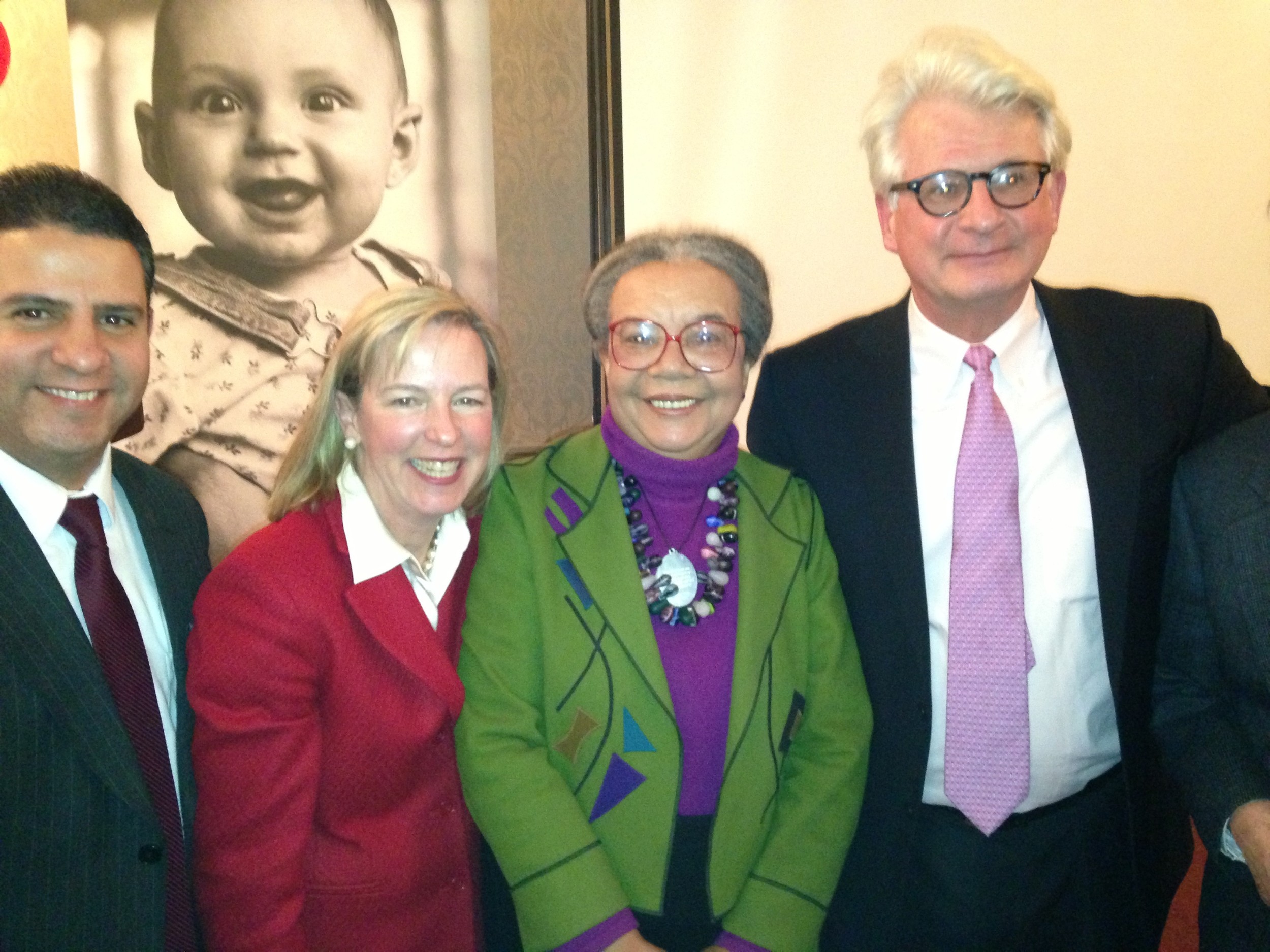The good, the bad and the urgent
RI Kids Count Factbook details why children need to be a critical part of the state’s future economic investment strategy
WARWICK – In 2018, minority children will become the majority children in Rhode Island, reflecting the changing demographics and the rise of our culturally diverse community, Elizabeth Burke Bryant, executive director of Rhode Island Kids Count, told ConvergenceRI in a recent interview.
That change puts more urgency to the significant racial and ethnic disparities detailed in the 2014 Rhode Island Kids Count Factbook, released today at the Crown Plaza at the advocacy group’s annual breakfast.
“Racial and ethnic disparities in education are evident before children enter kindergarten and persist throughout high school and college,” the report said, which documented the widening gap in economic well-being, and health, safety and economic outcomes for minority children in Rhode Island.
That gap is magnified by the fact that Rhode Island has the fifth lowest birth rate in the nation: between 2002 and 2012, Rhode Island’s child population decreased by 12 percent, from 247, 822 to 216,962.
The numbers for children living in poverty in Rhode Island are eye-openers – 20 percent, or one out of five overall. But broken down, it’s 14 percent for White, 40 percent for Hispanic, 39 percent for Black, 22 percent for Asian, and 54 percent for Native American.
From performance in fourth-grade reading and mathematics proficiency in education to the likelihood to be hospitalized for asthma in health, the outcomes from this year’s Factbook, “really emphasize that Rhode Island cannot advance as a state if we have achievement gaps – disparities in terms of racial and ethnic groups,” Bryant said.
Adding children to the investment equation
At a time when candidates and elected officials often recite the refrain of workforce development as a pathway to build a more prosperous future for the state, the reality is that large numbers of Rhode Island children start kindergarten 19 months behind because of lack of funding for pre-K and Head Start programs, according to Bryant.
As of October 2013, there were 256 eligible pregnant women and children ages birth to three on waiting lists for Early Head Start Services and 699 eligible preschool children on waiting lists for Head Start services in Rhode Island, serving only 33 percent of the eligible children, according to Bryant.
Rhode Island’s state Pre-K currently has 234 children enrolled in its program, about 2 percent of four-year-olds in the state. The program has been found to improve children’s language and literary skills and close the achievement gap between low-income children and their more affluent peers. An obvious solution would be for the R.I. General Assembly to make an investment in the creation of more openings in the program.
“Jobs and the economy” are now considered the realpolitik of the R.I. General Assembly, as restated by the new House Speaker Nicholas Mattiello, who has promised to deliver on a more aggressive pro-business stance – a 21st century version of “the chief business of the American people is business.”
Mattiello – along with both Providence Mayor Angel Taveras and R.I. Treasurer Gina Raimondo, opponents in the Democratic primary for governor in 2014 – will be one of the state’s elected officials who will receive the 2014 Factbook at the breakfast today.
If Mattiello sits down and reads the Factbook, he will discover a series of evidence-based metrics that demonstrates the value of investing in children in Rhode Island – and the consequences of failing to do so.
“We know what children need to grow up healthy, safe, educated, and well-prepared for their future,” said Bryant. “The information presented in the 2014 Rhode Island Kids Count Factbook can help our state leaders and policymakers learn what is working, as well as to make well-informed program and policy decisions that support the well-being of all children in Rhode Island.”
But will it? Some business advocates have defined Rhode Island as a very narrow place to live in – with a myopic agenda of tolls, the budget, the Superman Building, and a corporate tax cut.
20 years of fact-driven data on children
For the last 20 years, Rhode Island Kids Count has led the way in compiling fact-driven data on the health and well being of Rhode Island’s children. Under the leadership of Bryant, who has served as executive director for that entire time period, the organization has emerged as one of Rhode Island’s leading advocates for investing in children as a sound economic and cultural policy.
At a recent January luncheon celebrating the advocacy organization’s 20th birthday, which featured Marian Wright Edelman, founder of the Children’s Defense Fund, as the keynote speaker, Bryant gave thanks to her children, who were now grown up, adults, and living on their own, for their support in understanding the often demanding nature of her job.
Bryant is one to always accentuate the positive. Before discussing any of the problems facing Rhode Island as documented in this year’s Factbook, she wanted to make sure that the positive trends were noted.
In health outcomes, Bryant cited the continued high rates of health insurance coverage for children under 18, with only 6 percent uninsured, with Rhode Island ranking 10th best in the nation. However, she added, about 71 percent – 10,792 of the estimated 15,121 uninsured children in Rhode Island between 2010 and 2012 – were eligible for RIte Care coverage based on their family incomes but were not enrolled in coverage.
Rhode Island also ranked as one of the top states for childhood immunization. Positive trends included increased access to dental care and a decreased teen birth rate.
The decline in the teen birth rate, Bryant told ConvergenceRI, “is a very good and important trend. The economic prospects for girls – and for all young people – will be much better if they delay parenting and have their education first.” However, birth rates for both Hispanic and Black teens in Rhode Island continue to be much higher than for White teens.
A message for elected officials
Bryant is often a constant presence at the State House, a tireless advocate for building coalitions to support children’s wellness. When the Providence Student Union held an event to highlight the problem many high school students face of having to walk more than two miles school each way for lack of access to a bus pass [See link to ConvergenceRI story below], Bryant was one of the adults who made the walk with the students. What’s needed is $1.3 million to cover the cost of bus transportation – once again, something the R.I. General Assembly could invest as part of the effort to build a stronger workforce and also cut down on chronic absenteeism – a detriment to educational achievement.
“The investments we make now for low-income children matter very much in moving the state in the right direction,” Bryant told ConvergenceRI. The investments, she continued, would go toward programs that have a proven track record. “We know what works, the data is there. We need to close the achievement gaps and put all children on a path toward educational success.”







